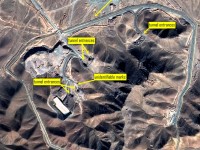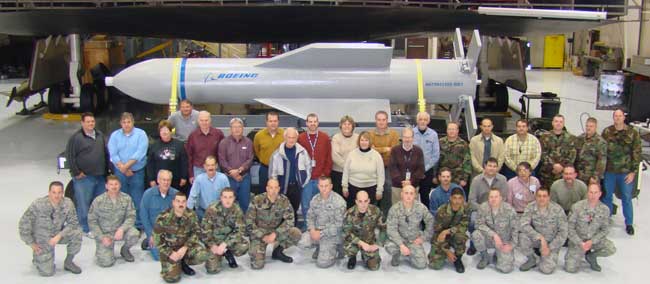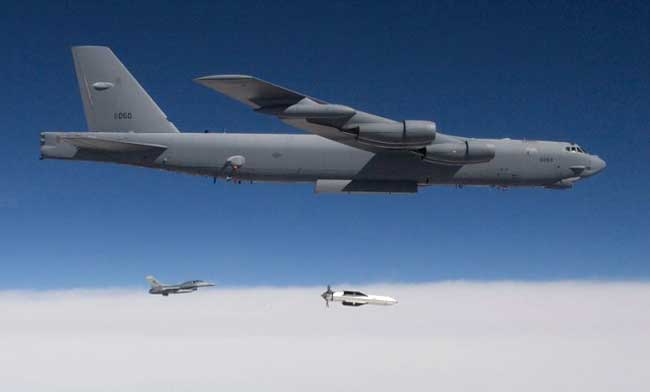
The US has enhanced its biggest bunker buster bomb specifically to enable the destruction of Iran’s underground Fordow uranium enrichment plant near the city of Qom. 20 such bombs – the biggest and heaviest bomb in the US arsenal, will be delivered this year, following the completion of upgrades and testing. The redesigned Massive Ordnance Penetrator (MOP) GBU-57A-B is now adapted for operations in heavily contested environment, where it will require to operate against Iran’s most protected nuclear sites. Defense-Update reports.

The White House see the development of the weapon as critical to convincing Israel that the U.S. has the ability to prevent Iran from getting a nuclear bomb if diplomacy fails, and also that Israel’s military can’t do that on its own. According to an article published by the Wall Street Journal, several times in recent weeks, American officials, seeking to demonstrate U.S. capabilities, showed Israeli military and civilian leaders secret Air Force video of an earlier version of the bomb hitting its target in high-altitude testing, and outlined the development made recently to improve the weapon. In the video, the weapon can be seen penetrating the ground within inches of its target, followed by a large underground detonation, according to people who have seen the footage.
According to the Wall Street Journal, the improvements are meant to address U.S. and Israeli concerns that Fordow couldn’t be destroyed from the air. Overcoming that obstacle could also give the West more leverage in diplomatic efforts to convince Iran to curtail its nuclear program. The upgraded MOP was enhanced almost exclusively to hit the Fordow Enrichment Plant, Iran’s largest nuclear facility, located under a mountain near the city of Qom. It’s buried so deep that, according to the Wall Street Journal, experts believe it would take several MOPs to destroy it, with one creating a crater and the rest using the improved guidance system to dive in after it and destroy the complex. The MOP was upgraded because officials didn’t believe the previous version could penetrate Fordow. The bombs could also be used to strike North Korea’s less protected nuclear bunkers. The message the MOP sends is clear: While the United States almost certainly won’t use nuclear weapons, it still has a pretty formidable arsenal capable of taking out even Iran’s most secure facilities, the newspaper added. “We are committed to trying to resolve concerns about Iran’s nuclear program diplomatically,” Caitlin Hayden, White House National Security Council spokesperson, told the Journal. “But, as President Obama has made clear: The U.S. will not allow Iran to acquire a nuclear weapon. The onus is on Iran and it knows that time is not unlimited.”
The GBU-57A-B weighs 16.6 tonnes (30,000-pound) most of the weight is its steel casing, enabling the 6.24 meter (20 foot) bomb bomb to penetrate through 18 meters (60 foot) of reinforced concrete. Only two platforms currently operational with the US Air Force can carry such a heavy weapon – the B-2 Spirit stealth bomber and old B-52H. The Air Force is managing and funding the program, with support from Defense Threat Reduction Agency (DTRA). The project began in 2004 as a proof of technology demonstration, viewing a conventional weapon that could support the President Bush Nuclear Policy Review, with emphasis on providing conventional weapon options to national commands, thus reduce the nation’s dependence on nuclear weapons as a deterrent in the national security strategy. Early tests of MOP were conducted by DTRA under the MOP Technology Demonstration effort. These tests began in 2004 with DTRA partnering with the Air Force Research Laboratory. DTRA conducted flight tests from 2008 to 2010.
In February 2010, the DTRA MOP Technology Demonstration transitioned to the Air Force as a Quick Reaction Capability Program demonstrating an operational capability to attack hard and deeply-buried facilities. Air Force officials long stated that they had a long-standing requirement for this capability. In 2009 Boeing was awarded the contracts to complete MOP/Aircraft integration and produce 20 weapons. In recent months the weapon went through the final cycle of upgrades, which adjusted fuses to maximize its burrowing power, adjusted specifically to withstand impact with layers of granite and steel that encase the nuclear facility. Other upgrades address the guidance systems to improve the precision of its inertial navigation system and deny the effect of GPS jamming or other electronic countermeasures. According to the US Air Force, flight tests have been successfully conducted at White Sands Missile Range, New Mexico.
According to Air Force sources, MOP integration activities for initial weapon delivery are also complete. Final system refinement, design and test was completed in 2012 with additional weapon deliveries planned in 2013 but according to sources, the upgraded MOP hasn’t been dropped from a plane yet. Officials said they believe the enhanced bomb would be even more effective against North Korea’s nuclear bunkers, which the U.S. thinks aren’t as heavily fortified as Iran’s.
Source: Defense-Update


















